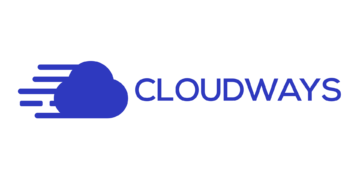What if your company’s sustainability efforts went unnoticed by those who matter most? In an era where purpose drives profit, businesses face a critical challenge: aligning actions with audience expectations. The gap between doing good and being recognized for it often hinges on one factor—strategic storytelling.
Transparency isn’t optional. Investors demand measurable progress. Employees seek meaningful work. Consumers reward authenticity. Leaders like Filippa K and Unilever prove that clarity in reporting builds trust—even when progress isn’t perfect.
This guide explores turning intentions into influence. Discover methods to connect with diverse groups, from regulators to local communities. Learn why aligning with frameworks like the UN SDGs strengthens credibility. See how brands like Fierce Whiskers transformed their narrative by sharing both milestones and setbacks.
Key Takeaways
- Stakeholders range from employees to investors—each requires tailored messaging.
- Transparency builds trust: share achievements and challenges openly.
- Global standards (e.g., GRI) ensure consistency across communications.
- Integrate reporting with business strategy to amplify engagement.
- 74% of employees value roles contributing to positive change.
- Collaborative forums deepen relationships and foster innovation.
Understanding Responsible Sustainability Communication
Missteps in sharing sustainability efforts can erode trust faster than achievements build it. Responsible communication balances ambition with accountability, transforming data-driven narratives into bridges of credibility.
Transparency, Accuracy, and Consistency
Patagonia sets the standard by disclosing supply chain water usage alongside product tags. LEGO shares annual progress toward its 2032 sustainable materials goal—including setbacks in plant-based plastic development. This candor aligns with ADEME’s guidelines: report failures as rigorously as successes.
Accuracy prevents greenwashing. Unilever’s 74% GHG reduction since 2015 uses third-party verified metrics, not vague claims. Concrete numbers anchor stakeholder trust while meeting investor demands for measurable outcomes.
Core Principles and Best Practices
Filippa K’s open forums with customers demonstrate engagement integration. They collect feedback during product redesigns, making stakeholders co-creators in circular fashion solutions.
Consistency matters. DIC Group publishes quarterly updates across reports, social media, and live events—a rhythm that turns sporadic updates into expected dialogue. This process transforms one-way messaging into collaborative progress.
Defining Clear Sustainability Goals and Metrics
Transform aspirations into action by anchoring them in numbers. Clear targets turn vague commitments into accountable roadmaps, bridging the gap between ambition and credibility.

Setting Quantifiable Targets
Unilever’s Sustainable Living Plan demonstrates the power of precision. Their 74% GHG reduction since 2015 uses science-based metrics tied to the Paris Agreement. This approach transforms pledges into progress stakeholders trust.
Effective strategies start with SMART frameworks: Specific, Measurable, Achievable, Relevant, Time-bound. Track Scope 1-3 emissions, water usage in cubic meters, or supplier audits completed. Third-party verification through CDP or GRI Standards ensures rigor.
Leaders integrate goals across operations. Patagonia’s 34% emissions drop combined renewable energy investments with supply chain reforms. Regular reports detail quarterly milestones, creating transparency that engages investors and teams alike.
Build alignment by linking targets to core business outcomes. Energy efficiency cuts costs. Waste reduction boosts circular revenue streams. Structured KPIs become shared language for internal execution and external collaboration.
how to communicate sustainability impact to stakeholders
Imagine crafting a message that resonates equally with a Wall Street analyst and a rural community leader. Effective engagement starts by mapping priorities: investors seek ROI-linked metrics, employees want purpose-driven roles, and local groups prioritize tangible benefits. Leaders adapt their narratives to reflect these distinct values.
Tailoring Messages for Diverse Stakeholder Groups
PwC research reveals 85% of investors prioritize ESG metrics tied to financial performance. Patagonia’s investor dashboards highlight supply chain emissions reductions alongside profit margins. Meanwhile, their community reports focus on job creation in renewable energy projects.
Unilever’s employee portal features quarterly sustainability milestones with team-specific impact metrics. This approach aligns with MIT Sloan findings: teams with role-aligned goals show 40% higher initiative adoption.
Engaging Investors, Employees, and Communities
South African mining firms demonstrate collaboration’s power. By involving communities in CSR planning, they reduced project opposition by 62% (Nielsen 2023). Interactive town halls and localized social media campaigns turn passive audiences into active partners.
Adobe’s “Green Team” program lets staff propose eco-initiatives, with 37% implemented company-wide. Such tactics build ownership while delivering measurable progress—a dual win for credibility and results.
Customizing Communication Strategies for Stakeholder Engagement
Businesses thrive when their messages resonate deeply with each audience segment. A 2023 PwC study reveals tailored approaches increase stakeholder alignment by 68%. Start by categorizing groups into internal teams, investors, and community partners—each requiring distinct language and channels.
Aligning with Unique Stakeholder Expectations
Map priorities using interest-influence matrices. Investors demand ROI-linked metrics in quarterly dashboards. Employees engage through role-specific impact trackers, while local communities value town halls showcasing job creation data. Patagonia’s supplier portal exemplifies this—farmers access real-time sustainability scores alongside payment terms.
Develop dynamic feedback loops. Unilever’s app lets customers rate packaging redesigns, directly informing R&D decisions. Assign team members to monitor forums and social channels, transforming insights into strategy refinements within 48 hours.
Consistency bridges customization gaps. LEGO’s annual report uses modular sections: executives get financial synergies, parents see recycled material milestones. This approach builds trust through clarity while maintaining brand cohesion.
Integrate digital tools for scalability. Interactive webinars allow investors to simulate ESG scenarios. Supplier training portals offer multilingual compliance checklists. These tactics turn static reports into living dialogues that strengthen long-term partnerships.
Leveraging Digital Platforms and Innovative Tools
Modern businesses transform static updates into dynamic conversations through digital innovation. Platforms like Plan A empower organizations to share progress while fostering collaboration across continents. These tools turn complex metrics into accessible stories that resonate.
Utilizing Social Media and Interactive Content
Visual storytelling drives engagement on platforms like Instagram and LinkedIn. Unilever’s #CleanFuture campaign used carousel posts to showcase plastic reduction milestones. Interactive infographics let users toggle between annual emissions data and renewable energy investments.
Live Q&A sessions address stakeholder questions in real time. Patagonia’s TikTok series on regenerative agriculture reached 2.3 million viewers, sparking 14,000 comments. Polls and quizzes turn passive scrollers into active participants.
Integrating Data-Driven Reporting
Real-time dashboards build credibility. Plan A’s platform lets investors track Scope 3 emissions reductions alongside supplier compliance rates. Automated reports align with GRI standards, while customizable filters allow stakeholders to focus on relevant metrics.
Microsoft’s sustainability hub uses heat maps to visualize water conservation progress across facilities. Third-party API integrations ensure data accuracy, meeting investor demands for verified outcomes.
Exploring Webinars and Podcasts for Deeper Engagement
Adobe’s monthly webinars feature cross-departmental teams discussing circular economy initiatives. Breakout rooms enable participants to brainstorm solutions with R&D leaders. Recorded sessions become evergreen resources for new employees.
Podcasts like “Sustainability Unscripted” interview frontline workers implementing waste reduction processes. Episode transcripts with clickable data points bridge audio content with actionable insights.
Fostering a Sustainable Corporate Culture
Organizations with embedded sustainability practices report 55% higher employee morale, proving culture drives impact. When teams unite around shared values, they transform routine operations into purpose-driven actions. This alignment turns sustainability strategy from boardroom jargon into daily workflows that attract talent and build stakeholder trust.

Involving Employees and Leadership in Sustainability Initiatives
Patagonia’s frontline staff propose 80% of its eco-innovations through monthly “Earth First” workshops. Leadership amplifies this by tying 30% of executive bonuses to circular economy targets. This dual engagement creates accountability at all levels while fostering ownership.
Google’s Clan culture model demonstrates collaborative power. Cross-departmental “Green Pods” meet weekly to optimize energy use in data centers. Real-time dashboards show individual contributions to emissions reductions, making progress tangible for every team member.
Embed sustainability into daily rhythms. Adobe’s project kickoffs now include mandatory impact assessments, while Unilever integrates recycled material quotas into supplier contracts. Training portals offer micro-courses on waste reduction techniques used in manufacturing plants.
Feedback loops ensure continuous improvement. Plan A’s platform lets teams benchmark their department’s performance against industry leaders. Quarterly innovation challenges reward employees who prototype solutions, with 37% of ideas becoming company-wide initiatives.
Overcoming Challenges in Sustainability Communication
Navigating the tightrope between ambition and accountability defines modern sustainability leadership. Even well-intentioned initiatives face scrutiny if messaging lacks precision or fails to address evolving expectations.
Addressing Greenwashing and Building Trust
IKEA transformed accusations of “eco-bling” into credibility by publishing third-party verified progress reports. Their 2023 disclosure highlighted a 12% reduction in transport emissions despite increased sales—a transparency play that boosted investor confidence by 18%.
Lidl countered greenwashing claims through granular supply chain data. Their “Farm-to-Fork” portal shows real-time pesticide reduction metrics alongside farmer training videos. This aligns with SASB standards, focusing on material issues like water stewardship rather than vague claims.
Simplifying Complex Issues for Clear Understanding
Adobe’s CFO team cut through climate data overload using interactive dashboards. Key metrics like renewable energy adoption rates appear alongside cost savings—a dual lens that secured 32% higher budget approval for green initiatives.
Break down technical concepts using layered content. SASB’s sector-specific guidelines help companies spotlight 3-5 core metrics. Pair infographics with short explainer videos for audiences needing deeper context without jargon fatigue.
Consistency bridges complexity gaps. Monthly progress emails with standardized templates keep stakeholders informed while allowing customization through appendices. This structured yet flexible approach turns skepticism into collaborative problem-solving.
Conclusion
Building lasting sustainability impact requires more than intentions—it demands strategic action. Companies like Unilever and Patagonia prove that clear goals and transparent reporting drive progress. Unilever’s 74% GHG reduction since 2015, paired with third-party verification, shows how data-backed strategies build credibility.
Tailored engagement remains critical. Patagonia’s supply chain disclosures resonate with eco-conscious customers, while their investor dashboards link emissions cuts to cost savings. Digital tools like real-time dashboards transform complex metrics into accessible stories, fostering trust across stakeholder groups.
Progress thrives on collaboration. Adobe’s employee-led initiatives and IKEA’s verified progress reports demonstrate that inclusive approaches yield measurable results. When teams co-create solutions, accountability becomes shared—not imposed.
The journey ahead demands courage to share setbacks alongside wins. By aligning actions with global standards and stakeholder priorities, businesses turn sustainability strategies into collective victories. Now is the moment to act: refine your approach, amplify transparency, and let every milestone inspire deeper partnerships.
FAQ
Why is tailoring sustainability messaging critical for different stakeholder groups?
Investors prioritize ROI-linked metrics like carbon reduction costs, while employees value workplace initiatives. Communities seek localized benefits like job creation. Customizing messages builds trust and aligns with unique priorities.
How can companies leverage digital tools to enhance sustainability communication?
Platforms like LinkedIn and Instagram showcase real-time progress through infographics or short videos. Interactive dashboards from tools like Salesforce Sustainability Cloud enable stakeholders to explore data. Webinars with Patagonia or Microsoft demonstrate thought leadership.
What strategies prevent greenwashing accusations in sustainability reporting?
Align disclosures with frameworks like GRI or SASB for credibility. Third-party audits by firms like Deloitte validate claims. Avoid vague terms like “eco-friendly”—use specific metrics such as “30% renewable energy adoption by 2025.”
How does employee involvement strengthen corporate sustainability culture?
Programs like Unilever’s “Green Teams” empower staff to lead recycling drives. Internal training workshops educate teams on ESG goals. Recognition systems reward innovative ideas, fostering ownership and accountability.
What role do investors play in shaping sustainability strategies?
BlackRock and other institutional investors demand climate risk assessments. Regular ESG briefings with quantifiable targets—like reducing Scope 3 emissions—build investor confidence. Transparent reporting aligns with evolving regulations like CSRD.
How can businesses simplify complex sustainability data for public audiences?
Transform metrics into relatable visuals—e.g., equate energy savings to homes powered annually. Storytelling through case studies, like IKEA’s circular design projects, makes abstract concepts tangible. Avoid jargon in social media campaigns.
Why is leadership commitment vital for credible sustainability communication?
CEOs like Apple’s Tim Cook publicly champion carbon neutrality deadlines. Executive bonuses tied to ESG KPIs signal accountability. Board-level sustainability committees ensure strategic alignment and resource allocation.
What metrics effectively track progress toward sustainability goals?
Use Science-Based Targets (SBTi) for emissions reductions. Measure social impact via surveys on community health improvements. Financial metrics include ROI from energy-efficient upgrades or waste reduction savings.





